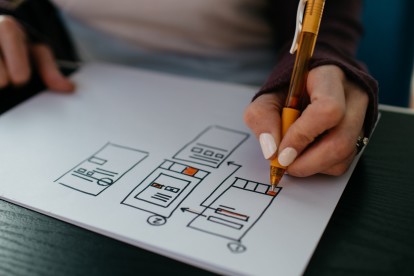But first... what is UX Design?
User experience design, aka UX design, is an increasingly in-demand tech skill dedicated to creating an enjoyable, accessible, and seamless experience for the user of a product. This product can be anything from an online store, a video game menu, a dating app, an elevator panel, you name it!
In order to improve the user journey, those with UX design skills will often design wireframes, create prototypes, conduct user testing, and conduct research on user behaviour.
Whether you're working as a developer, a designer, a product manager, or in any tech-adjacent role, there are tons of benefits that come with learning UX design! Here are some:
1. Unlock new career opportunities
Adding to your existing skill set through learning UX design can boost both your hiring appeal and consideration for promotion. A LinkedIn study from 2020 found that UX design was one of the most in-demand hard skills that employers were seeking, and Glassdoor rated UX design as one of the best jobs to have in 2022. Plus, upskilling with UX design could also add to your existing salary as you bring additional qualifications to the table — the average salary of a UX designer is $77,090 according to Glassdoor, which comes in above the national average.
The field of UX design is multidisciplinary — you'll gain lots of transferable skills including research, critical thinking, visual communication, and coding. Whether you're looking to grow within your current role or change careers completely, learning UX design and its associated skills is a guaranteed way to level up!
2. Save time and money
Great UX design means that you'll spend less time and money later down the line on fixing usability bugs and issues. This is because with UX design chops, you would have invested in conducting research on user behaviour before launching a product, in order to get a better idea of what design elements work best for your audience.
Getting to know your customers and audience on this level is a huge help for other teams in your organization, including development, sales, and marketing. Sharing your findings with these departments will allow everyone to better understand your audience, leading to a potential increase in website/product performance and revenue.
3. Make a meaningful impact
Aside from helping your organization, good UX design improves accessibility and the lives of people who rely on your design. This includes those with disabilities (e.g. people who cannot see images due to visual impairment), as well as those without disabilities (e.g. people who cannot see images due to living in an area with expensive/low bandwith). Prioritizing UX design makes sure everyone can access, experience, and enjoy a product — it benefits everyone!
4. Flex your creativity
UX design means getting to flex your creative problem-solving skills — you'll be working with many moving pieces, including different teams, various goals, and ever-evolving best practices, and finding innovative ways to make them all work together seamlessly.
Depending on the team, UX designers or those with UX design chops may also get to work with graphic designers and/or UI (user interface) designers to conceptualize the look of a website, including fonts, graphics, colours, and layout. While making a website functional is key, enhancing the visual appeal for users will be crucial to ensure they stay on your page. Studies show that it takes only 50 milliseconds for a user to pass judgement on your website. Visual appeal will help you pass the user judgement test with flying colours!
Learn UX Design online
Our part-time UX Design course is perfect for beginners looking to level up with this in-demand skill, or explore a new career in the booming UX industry by learning the foundations. Download our course package to see what you'll learn and build!

